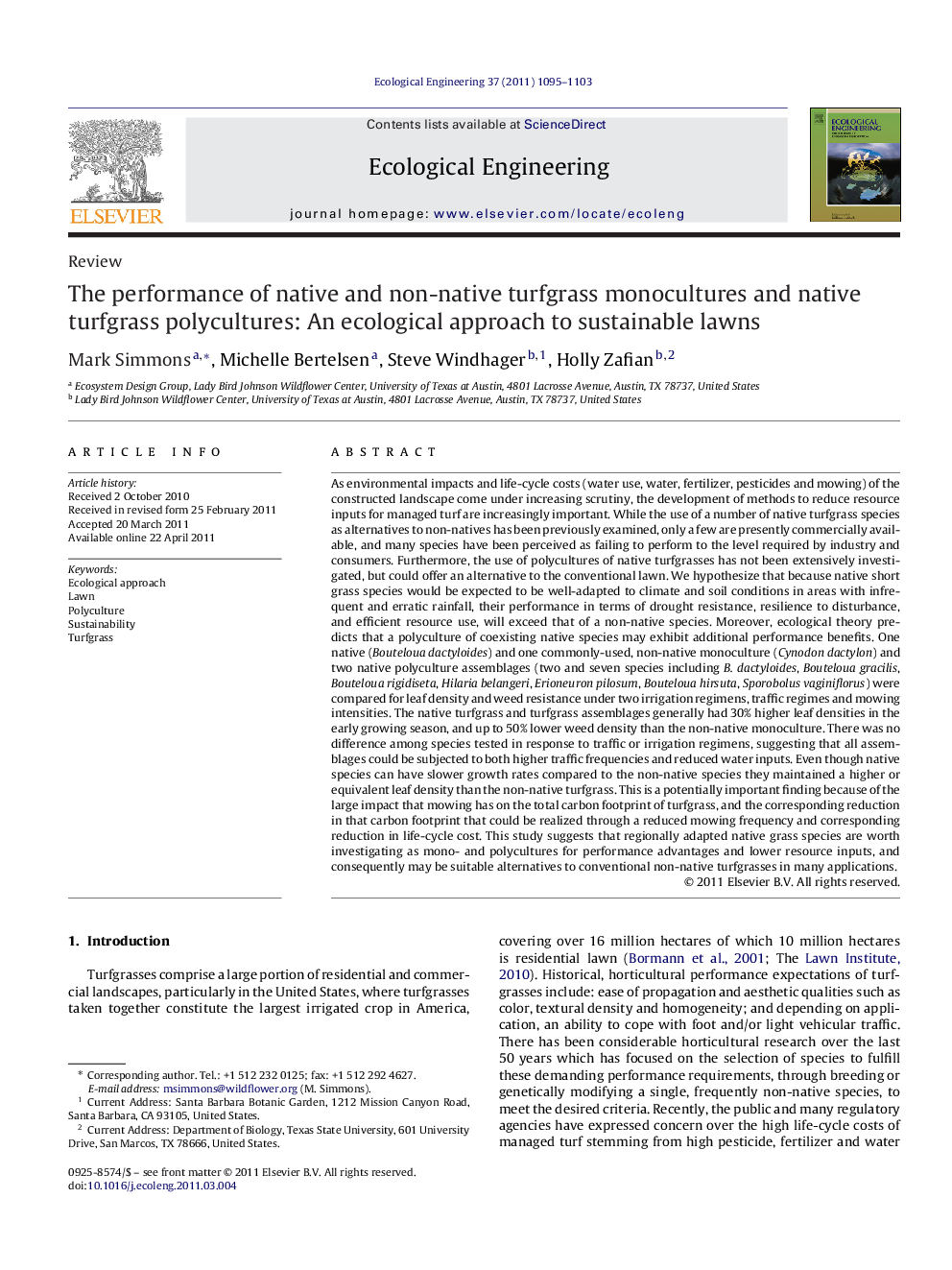| کد مقاله | کد نشریه | سال انتشار | مقاله انگلیسی | نسخه تمام متن |
|---|---|---|---|---|
| 4390384 | 1305170 | 2011 | 9 صفحه PDF | دانلود رایگان |

As environmental impacts and life-cycle costs (water use, water, fertilizer, pesticides and mowing) of the constructed landscape come under increasing scrutiny, the development of methods to reduce resource inputs for managed turf are increasingly important. While the use of a number of native turfgrass species as alternatives to non-natives has been previously examined, only a few are presently commercially available, and many species have been perceived as failing to perform to the level required by industry and consumers. Furthermore, the use of polycultures of native turfgrasses has not been extensively investigated, but could offer an alternative to the conventional lawn. We hypothesize that because native short grass species would be expected to be well-adapted to climate and soil conditions in areas with infrequent and erratic rainfall, their performance in terms of drought resistance, resilience to disturbance, and efficient resource use, will exceed that of a non-native species. Moreover, ecological theory predicts that a polyculture of coexisting native species may exhibit additional performance benefits. One native (Bouteloua dactyloides) and one commonly-used, non-native monoculture (Cynodon dactylon) and two native polyculture assemblages (two and seven species including B. dactyloides, Bouteloua gracilis, Bouteloua rigidiseta, Hilaria belangeri, Erioneuron pilosum, Bouteloua hirsuta, Sporobolus vaginiflorus) were compared for leaf density and weed resistance under two irrigation regimens, traffic regimes and mowing intensities. The native turfgrass and turfgrass assemblages generally had 30% higher leaf densities in the early growing season, and up to 50% lower weed density than the non-native monoculture. There was no difference among species tested in response to traffic or irrigation regimens, suggesting that all assemblages could be subjected to both higher traffic frequencies and reduced water inputs. Even though native species can have slower growth rates compared to the non-native species they maintained a higher or equivalent leaf density than the non-native turfgrass. This is a potentially important finding because of the large impact that mowing has on the total carbon footprint of turfgrass, and the corresponding reduction in that carbon footprint that could be realized through a reduced mowing frequency and corresponding reduction in life-cycle cost. This study suggests that regionally adapted native grass species are worth investigating as mono- and polycultures for performance advantages and lower resource inputs, and consequently may be suitable alternatives to conventional non-native turfgrasses in many applications.
Journal: Ecological Engineering - Volume 37, Issue 8, August 2011, Pages 1095–1103